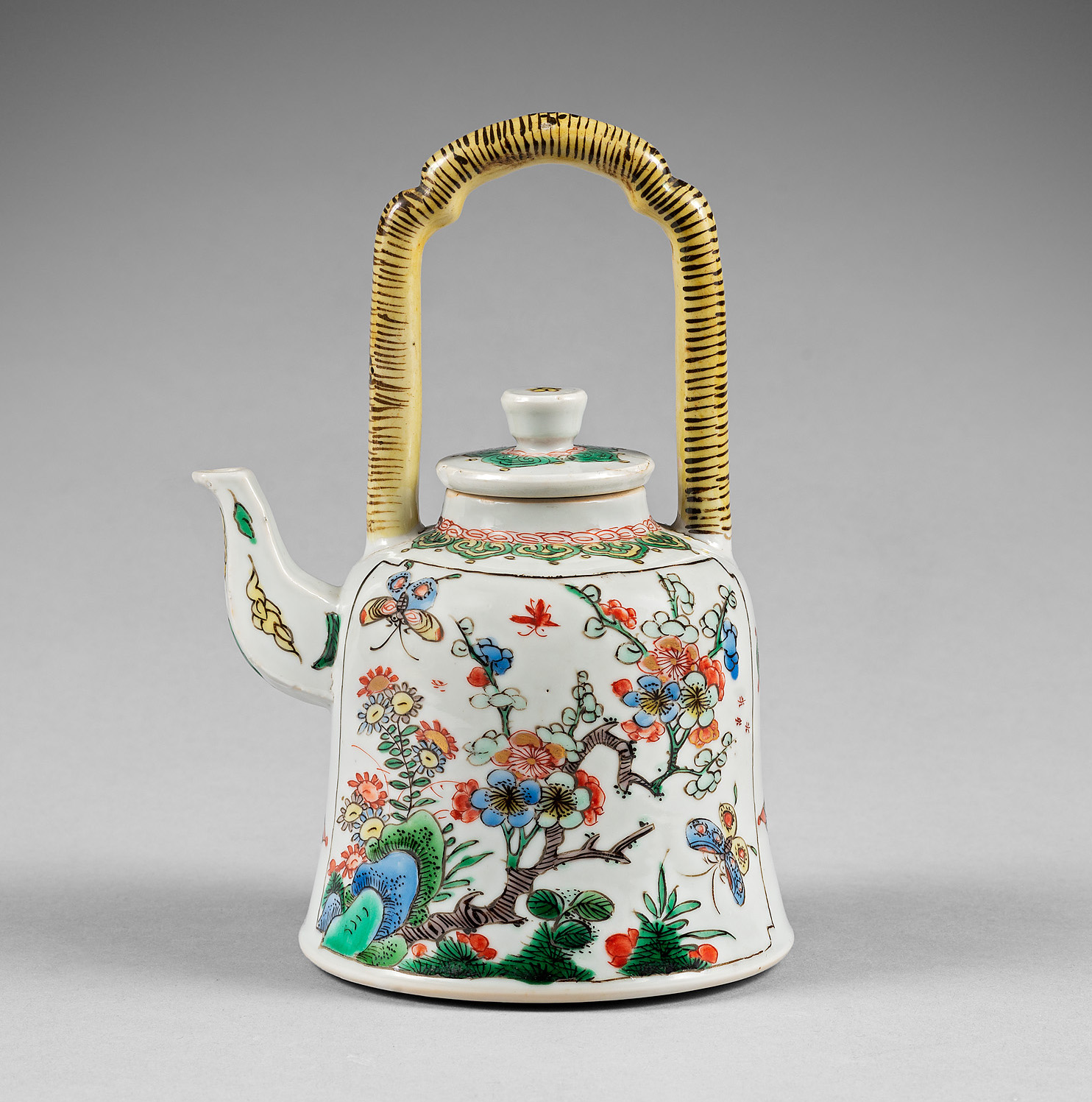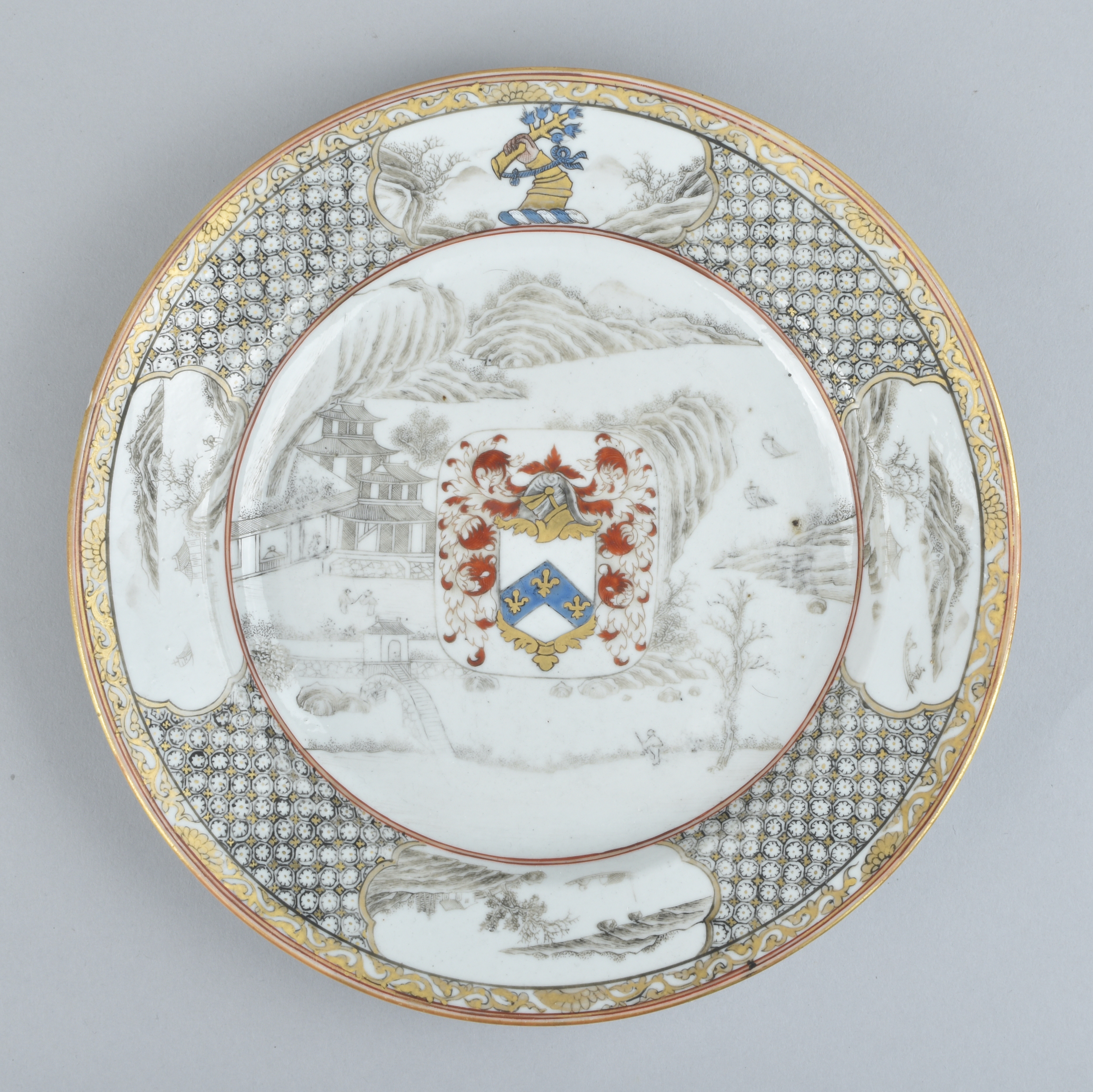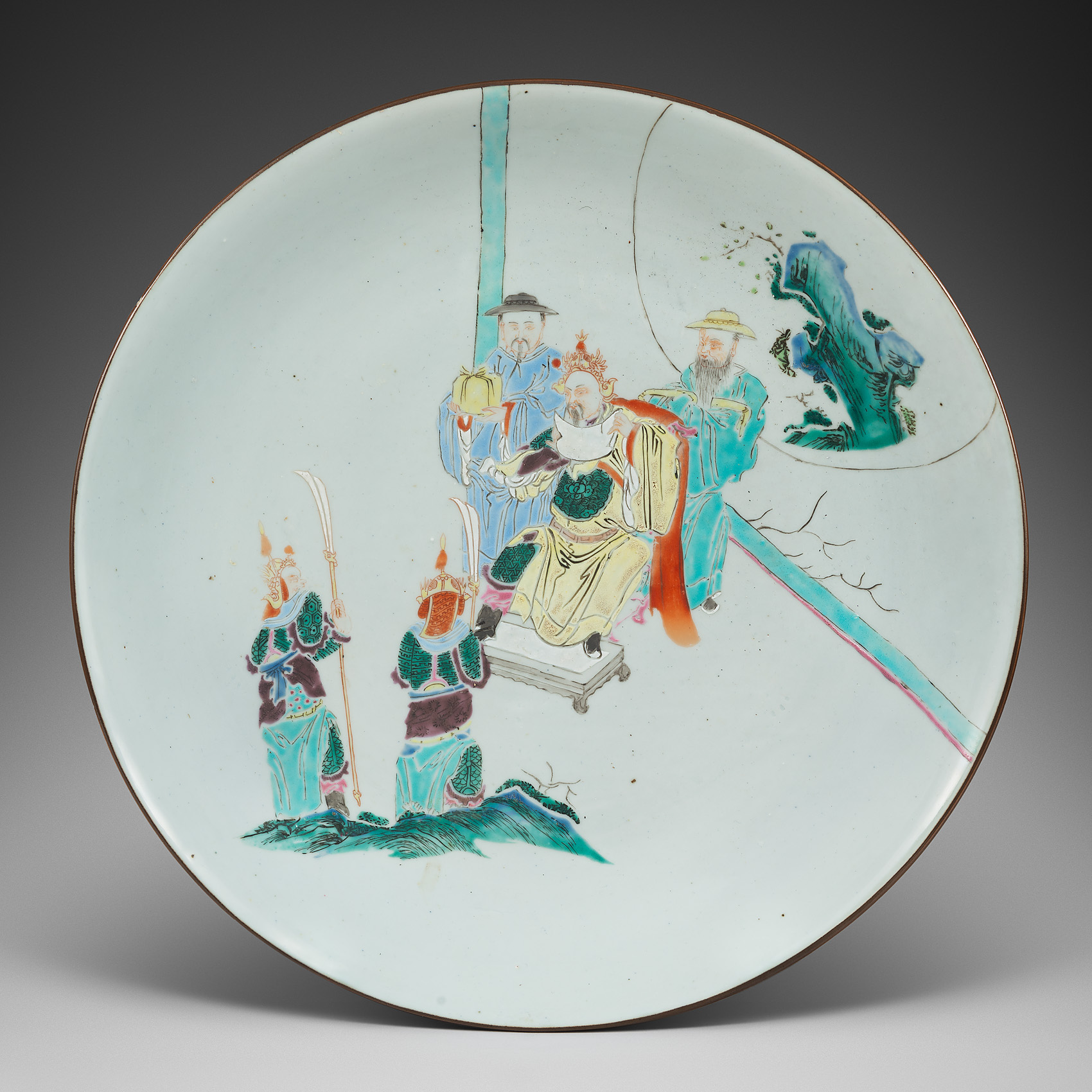
A Chinese blanc-de-chine figure of a gentleman seated atop an elephant. Kangxi
Very naturalistically modeled, and depicting a European gentleman seated atop a standing elephant, holding a pipe, and wearing a buttoned jacket and elaborate waist band, pantaloons and boots, covered with a cream glaze.
- Country:
- China (Dehua)
- Period :
- Kangxi (166-1722), circa 1680
- Material:
- Porcelain
- Dimension:
- 6.69 in. (17 cm)
- Reference :
- E081
- Status:
- sold
Provenance
From a French private collection
Related works
For a pair of very similar examples, see Marchant, Exhibition of Blanc de Chine, 2014, no. 49.
A similar group is illustrated by P. J. Donnelly in Blanc de Chine, pl. 110, no. 341.
Another model of an elephant (but without a European figure) was in the royal collections of the Saxon elector and Polish King Augustus the Strong (Porzellansammlung, inventory number PO 8508).
Notice
Symbol of power and wisdom, the elephant was not directly known to the Chinese craftsmen. Although the elephant had a prominent place within the Buddhist culture, the massive animal became extinct early in China and Japan.
This animal was also particularly popular in Europe. In Dresden, during the celebration that occurred in June 1709 for the visit of Frederick IV of Denmark, Augustus the Strong lead the quadrille of Africa in the carousel of the Four Continents where two elephant-like machines paraded. The elephant motif has been also integrated to the decoration of the Zwinger palace built in 1711. Moreover, the exotic animal was a source of inspiration for the modelers in Meissen, specially Gottlieb Kirchner.
In 1668, the King of Portugal offered an elephant to Louis XIV for the ménagerie royale de Versailles. The Manufacture of Chantilly was similarly inspired by the elephant motif and produced white-porcelain elephants (see Gardiner Museum of Toronto). Other models have been crafted in Japan with a Kakiemon decor.

























